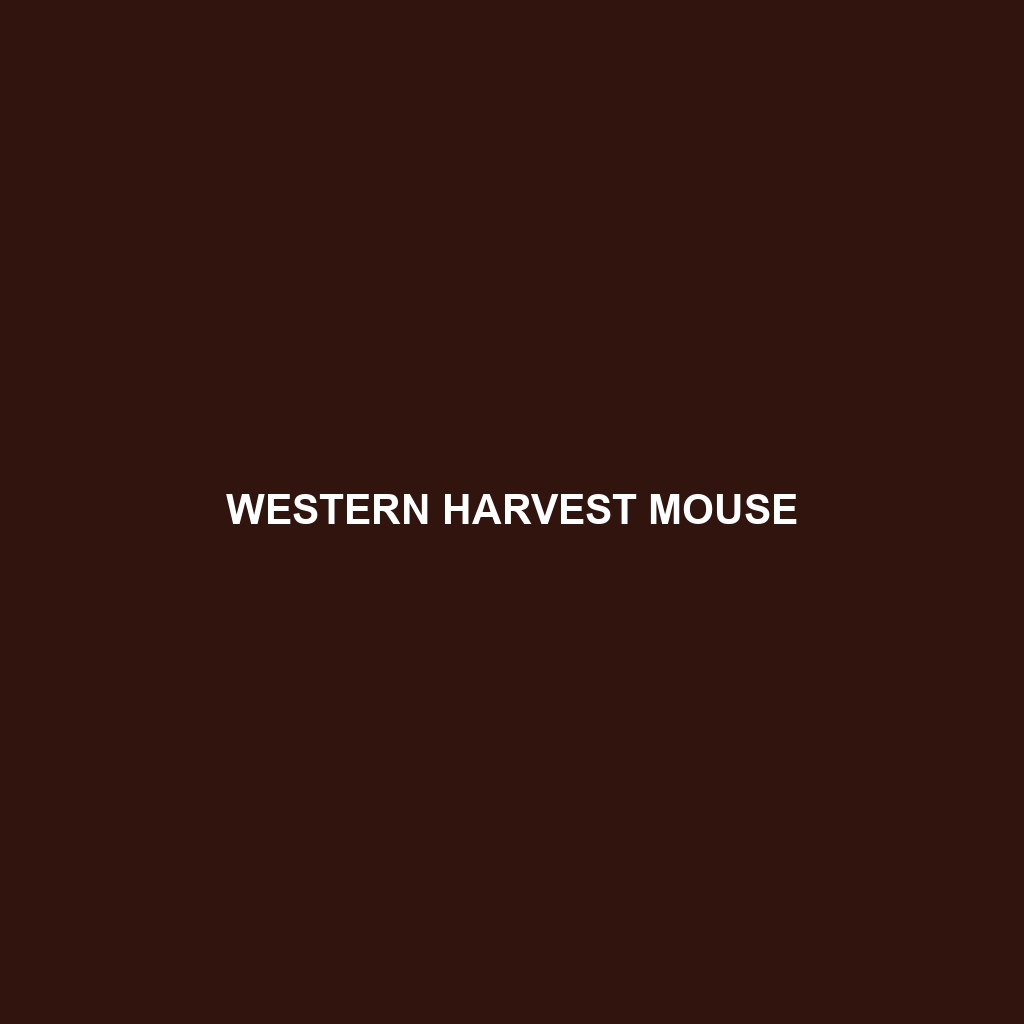Western Harvest Mouse Species Description
Common Name: Western Harvest Mouse
Scientific Name: Reithrodontomys megalotis
Habitat
The Western Harvest Mouse is primarily found in the western United States, particularly in areas such as California, Nevada, Utah, and parts of Oregon and Idaho. This species thrives in habitat types including grasslands, agricultural fields, and scrublands. They prefer environments with dense vegetation that provides ample cover and food sources.
Physical Characteristics
This small rodent measures approximately 6 to 9 inches in length, including its long, tufted tail. The Western Harvest Mouse has a slender body covered in soft, reddish-brown fur with a creamy underbelly. Its large ears and distinctive whiskers enhance its sensory capabilities. Notably, this species has a unique set of incisors that are specially adapted for gnawing, making it easier for them to access seeds and grains.
Behavior
Western Harvest Mice are primarily nocturnal and are known for their agile movements. They are proficient climbers and can often be spotted foraging on low shrubs or foraging the ground at night. Their social structure is generally solitary, although they do exhibit some gregarious behavior during mating season. These mice are known to construct nests in dense vegetation, primarily composed of grasses and other plant materials.
Diet
This species has a predominantly herbivorous diet, which consists mainly of seeds, grains, and various plant materials. They are particularly fond of grass seeds and often forage at dusk and dawn. The Western Harvest Mouse plays a crucial role in seed dispersal within its ecosystem, contributing to the propagation of various plant species.
Reproduction
The breeding season for the Western Harvest Mouse typically occurs in the spring and summer months, with females capable of producing multiple litters each year. A typical litter consists of 3 to 6 young, which are born blind and hairless. The mother provides care and nourishment until the offspring are weaned, which usually occurs about three weeks after birth. Notably, the young mice exhibit rapid growth and develop independence quickly, often leaving the nest within a month.
Conservation Status
According to the IUCN Red List, the Western Harvest Mouse is currently classified as ‘Least Concern’, although habitat destruction and fragmentation pose ongoing threats. Monitoring this species is crucial to ensure its populations remain stable and healthy, as urbanization and agriculture continue to alter their natural habitats.
Interesting Facts
One fascinating aspect of the Western Harvest Mouse is its ability to survive in various environments, demonstrating significant adaptability. They are also known for their impressive tracking abilities, often using their keen sense of smell to locate food sources. Additionally, Western Harvest Mice are observed engaging in play-like behavior, which helps develop their motor skills and social interactions.
Role in Ecosystem
As a seed disperser, the Western Harvest Mouse plays a vital role in maintaining the health of its ecosystem. By consuming seeds and moving about its habitat, it facilitates plant propagation and contributes to soil aeration with its burrowing behaviors. Furthermore, these mice serve as prey for various predators, thereby forming an essential part of the food web.
